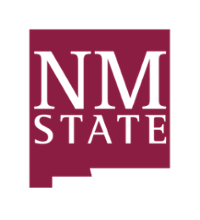
The Department of Art and the University Art Museum are housed in an award-winning LEED silver-targeted facility built in 2019 with nearly 60,000 sq. ft. of classroom, studio, and exhibition space. Devasthali Hall was designed with the emerging generation of art and culture professionals in mind with features that accommodate the robust research and creative activity of the department: indoor and outdoor work areas, a freight elevator and oversized hallways and doors, faculty and graduate studios, a student lounge, display and critique spaces, art history and museum offices, a conservation lab, museum galleries, and collections vault. In addition, Devasthali Hall includes flex spaces that meet a range of department-wide curricular needs: a collections study ‘smart’ classroom, a multi-purpose studio classroom, an event space with tiered seating, and a conference room. The building is named for Ammu and Rama Devasthali who championed the project and are recognized as transformational community leaders with passion for the arts.

The state-of-the-art ceramics studio provides high-quality technical facilities necessary for a comprehensive education in ceramic arts. The main ceramic studio and classroom consists of 1,800 square feet of centralized workspace for wheel throwing and hand building, with 24-hour access. There are twelve electric wheels, a large slab roller, and ample workspace and storage shelving. Additionally, there is a dedicated molding-making classroom, a humidity-controlled room, and a fully stocked glaze lab with spray booth. The clay mixing room is equipped with two high-quality vacuumed chambered pug mills, two Soldner clay mixers, a hundred-gallon slip mixer, and an impressive inventory of raw materials needed to mix and research clay bodies. An adjoining enclosed courtyard houses kilns as well as offering additional covered and uncovered outdoor workspace. Students are able to choose from a variety of kilns and firing methods, including six top-loading electric kilns, four small test electric kilns, two large Olsen gas kilns, one small test gas kiln, a raku kiln, and a large state-of-the-art computerized Blaauw gas kiln. To provide students with the ability to research the expanding realms of digital ceramics, a top-of-the-line ceramic 3-D printer and a colored decal printer are available. All graduate students receive individual top-tier 125-square-foot studio spaces, equipped with adjustable ventilation hoods, work table, sink, and storage shelving.

The graphic design and media arts computer lab is furnished with 20 iMacs, full access to Adobe Creative Suite, and a dedicated Epson scanner. A digital output facility also gives access to a 44” Epson SureColor P8000 large format printer and a 24” Epson SureColor P6000 large format printer. Advanced undergraduate students and graduate students have access to a separate lab with an additional 44” Epson large format printer and 17” Epson Printer P800.


WOOD SHOP: METAL SHOP EQUIPMENT

The drawing and painting facilities boast two undergraduate studios totaling over 2,500 square feet of workspace. Both studios feature independent exhaust systems, clerestory windows, and two-sided, hinged walls for extra workspace. The painting studio provides access to a mineral spirits parts washer for cleaning brushes, a freezer for paint storage, vertical and horizontal storage racks, and lockers for storing supplies. The drawing studio features a six-by-eight-foot exhaust wall for aerosol spraying and flat files for storing drawings up to 40 x 40 inches. Students have 24-hour access to both studios. All graduate students receive individual studios with natural lighting, exhaust hoods to remove hazardous fumes, and ample space for working and storage.

The metals studio and classroom consists of sixteen benches and ten soldering stations accommodating chemical process, enameling, machining, micro welding, 3D printing with castable wax, as well as an instructional monitor to project demonstration with document camera, printer, and computer. Two adjacent rooms support casting, raising, and forming. The outdoor courtyard includes covered working space with equipment for powder coating, lapidary work, polishing, and sand-blasting. The flexible outdoor area also supports welding, forging, and large-scale casting. In addition, students have access to the Fabrication Lab with a laser cutter (4’ x 3’) 3D scanner, and 3D printers, digital embroidery machine, with utility space for large-scale work, mixed media, and a separate photo studio for documentation.



